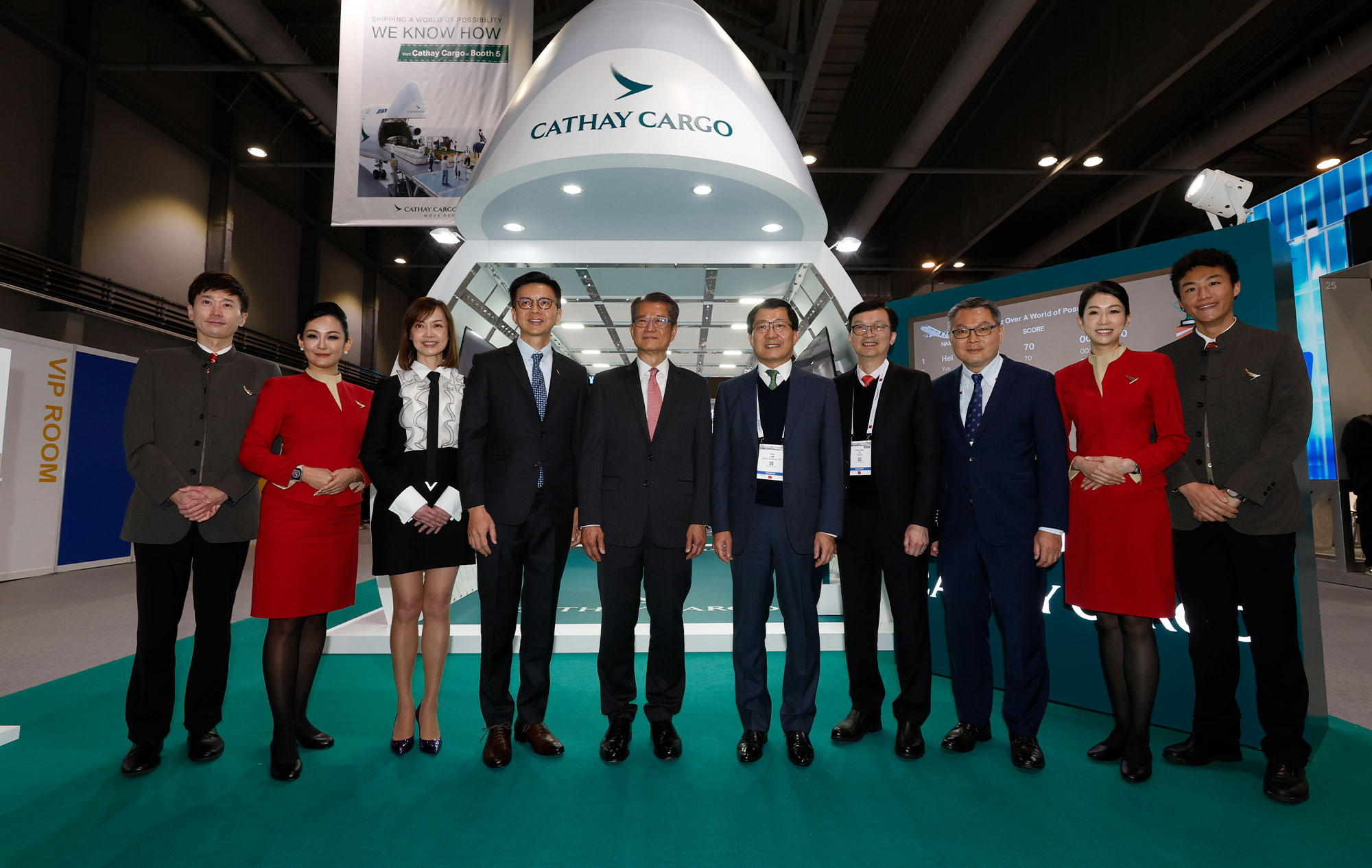The head office view
Jeanette Mao, head of cargo global accounts and marketing, Cathay Pacific

For air cargo, 2017 has been a year of high demand and big numbers. There have been big increases in tonnages, big increases in load factors – and big increases in yield.
Volume is exceeding capacity growth, reversing the trend of recent years, where over-capacity was adversely affecting yields. IATA reported in October that international FTK growth has been 11 per cent this year to date, exceeding the capacity ATK growth of four per cent. According to a report by consultants Seabury, the transpacific route experienced a decline in 2016, but is up 14 per cent this year, while Europe is up 15-16 per cent – in both directions – and intra-Asia traffic is up by 13 per cent. The signs are the market is set to stay strong.
What have been the factors behind this increased demand? For one, global economic confidence has pushed trade figures up, but within that there are also specific factors that have contributed to the solid growth of air freight in particular.
E-commerce continues to grow. This is helping to reduce the directional imbalances, with volumes growing in and out of China, as well as underpinning the double-digit growth of Intra-Asia lanes for Cathay Pacific’s cargo business.
Retail confidence has driven up the volumes of fast fashion, with brands wanting to get new and successful lines to market within days. Demand for air freight has also been driven by shortened product cycles for electronics and consumer products. This means more frequent product launches and the need to build up inventory in shops quickly.
In addition, the reliability of sea freight has been under pressure due to port congestion, a decline in on-time performance and the introduction of new alliance networks. This is a big risk for manufacturers reliant on just-in-time stocking, and that has seen automotive shipments and machinery parts air freight grow by 18 per cent and 14 per cent respectively in the first eight months of the year.
As a result, the dynamic load factor for Cathay Pacific freighters departing Hong Kong has reached an average of 97 per cent over the first ten months; that means almost every freighter leaving our hub is full. This mix of high demand and high load factors have pushed up yields. Forwarders have been struggling to increase rates with shippers, however, as capacity constraint and booming demand have become the norm throughout the year, shippers are having to accept that paying a higher level is reflective of the current market situation.
We are holding a positive view for 2018 and it will be another strong year for air freight. Hong Kong – with its cargo handling capabilities, customs regime and efficiency of the whole logistics chain – remains best placed to keep its number one status as the global hub for air cargo.
The View from the Chinese mainland
Kenneth Tsui, manager cargo, China

One of the stand-out statistics in a year with so many of them is that one in every three kilos of air freight has touched China. And Southern China is one of the top contributors to the country’s air cargo growth of 17 per cent.
The Seabury data shows that the growth in the cargo markets has been substantial. Asia to US has grown 14 per cent, Asia to Europe 16 per cent, and Asia to SAMEA is 15 per cent, while intra-Asia by 13 per cent. IATA forecasts growth for 2017 versus last year of 6.5 per cent. This is all linked to capacity and demand; capacity only grew by four per cent while demand grew by 12 per cent.
The reasons for growth in demand in China are the global recovery and especially the strong US dollar this year, which is boosting trade with the US. The other thing is that e-commerce is booming, and the sales are set to increase 23 per cent this year. The uptick has been accompanied by more time sensitivity as consumer expectations grow – people want their purchases quickly. Not only that, it is bi-directional, and ironing out the traditional directional demand issue. Additionally, we’ve seen shipping companies rationalise sea freight capacity, and that is helping us as well.
It means we have seen a double-digit improvement in revenue, tonnage is up 11 per cent, and yield is up by around eight per cent, but we only have the capacity to grow by two per cent. We are perceiving the market from the last quarter of 2016 to now to be similar to the last big peak, which was in 2010. That was the biggest peak in air cargo’s history, but we are already beyond that.
We are being approached by major shippers to protect space for their exports in partnership with carriers and agents. This is an indication that they have concerns about capacity when getting their products to market. Our challenge, and other carriers operating out of the Chinese mainland and Hong Kong, is that we have to strike a balance between capacity and demand and keep a sustainable operation.
The view from Europe
Ray Jewell, regional manager cargo, Europe

This year the market has been very good. We can safely say this has been a boom year, and the supply/demand mix has been and continues to be very positive for us – more positive than it has done for a number of years and the data reflects this.
We’ve seen economic growth in Europe, and that’s contributing to the increase in volumes of e-commerce because of consumer confidence. It’s a strong trend. Some instability in sea freight has also been a factor. In terms of tonnages, airfreight is a small part of the overall mix so it doesn’t take much to make to impact our business.
From a European perspective, fuller flights mean that we can concentrate on quality revenue, the higher yielding business. That could be pharma, express, or high-value items using our SecureLift product. We are looking at and achieving higher yields either with general cargo at a higher rate or higher yielding products. In Europe’s case it’s probably more about products than general cargo.
Our PriorityLift product is experiencing triple-digit growth, but that is from a relatively low base. Customers are prepared to pay more to get consignments to where they need to be quickly and they’re prepared to pay. Additionally, the growing wealth in China is fuelling strong demand for perishables and high-end luxury goods from Europe. As well as that, consumer confidence means that there is an increased perishability of all goods and if shippers need to catch trends, getting goods to market on time means air freight.
In terms of outlook for 2018, the feeling is that cargo will continue to be strong well into the first quarter of the year. It’s early December and we are already taking bookings for January. That lead times are lengthening, not across the board but at all, is a pretty encouraging indicator because people are struggling to find capacity. Customers have told us that they have warned shippers that there will be increases in rates.
We hope it will last the whole year, and if it does it might change how people manage their capacity requirements. We may see agents willing to buy capacity for a longer time at a higher rate because they want to protect their business.








